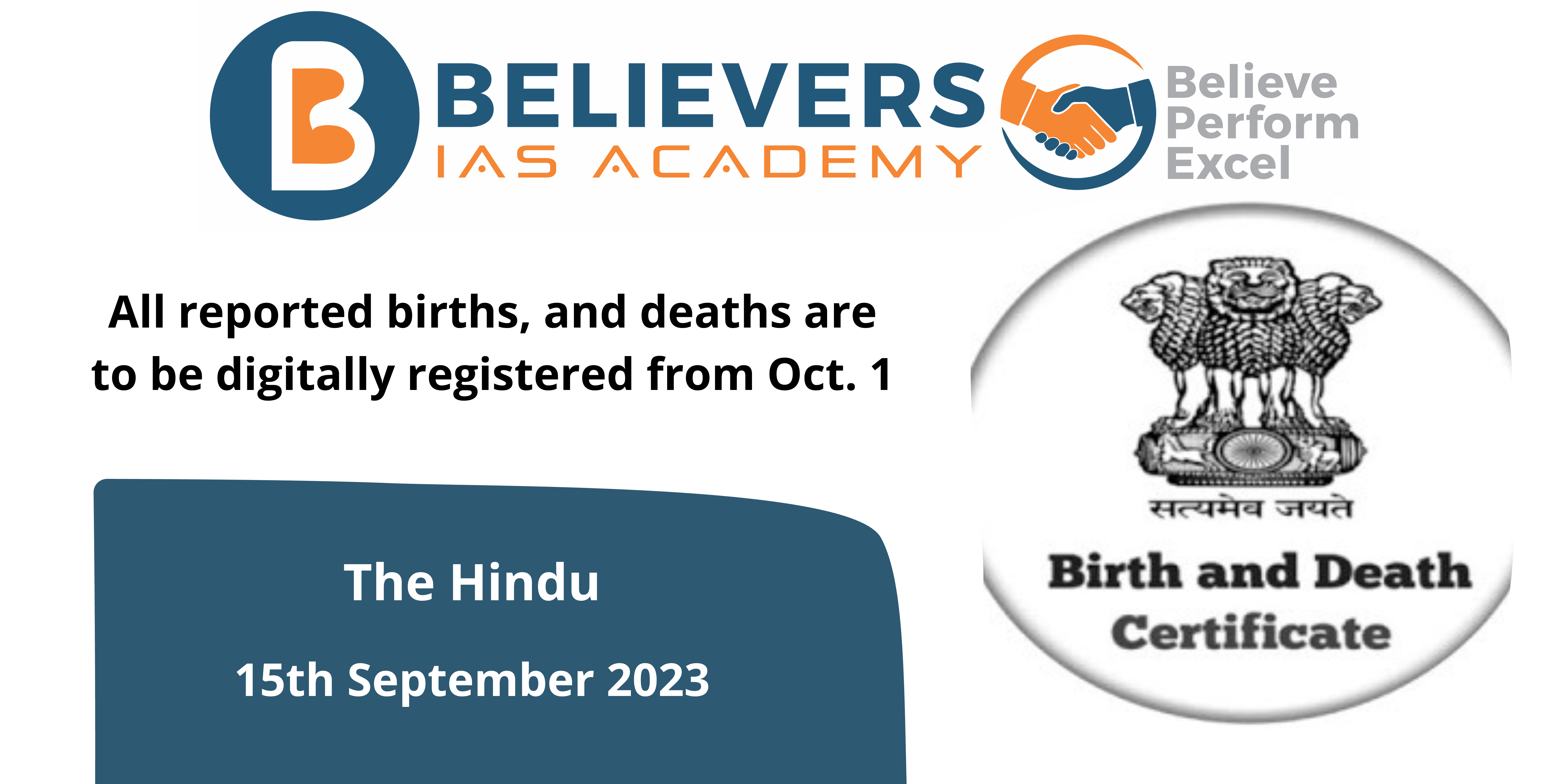All reported births, and deaths are to be digitally registered from Oct. 1
Context
Beginning on October 1, the Registration of Births and Deaths (Amendment) Act, 2023 will take effect, paving the door for digital birth certificates. The digital birth certificates will serve as a single document for many purposes, including voter registration, marriage registration, applications for driving licenses, government positions, passports, or Aadhaar.
What is the Births and Deaths Amendment Bill 2023?
- The Registration of Births and Deaths (Amendment) Bill, 2023 makes amendments to the 1969 Act. The legislation attempts to make birth certificates the only irrefutable age proof accepted for a variety of uses, such as:
- entry into educational institutions
- voter list preparation
- Employment
- Additionally, the bill mandates that states submit birth and death registrations to the Civil Registration System (CRS) website. The Registrar General of India will receive the data.
- A national and state-level database of recorded births and deaths will be created by the legislation. Other authorities who manage other databases, including electoral rolls, population registers, and ration cards, will have access to this one.
What is the purpose of the CRS in the country?
- To keep track of births and deaths, there is a system called the Civil Registration System (CRS). The Registrar General of India oversees the CRS.
- All births and deaths must be recorded on the Civil Registration System (CRS) portal of the Center by the states.
- This data must be shared with the Registrar-General and Census Commissioner, which operates under the Union Home Ministry.
What are the purposes of Digital Birth Certificates?
- Digital birth certificates can be issued thanks to the Registration of Births and Deaths (Amendment) Act of 2023.
- These digital birth certificates will function as one document for a variety of uses, including:
- Admission to educational institutions.
- Application for a driving license.
- Government job applications.
- Passport applications.
- Aadhaar enrollment.
- Voter registration.
- Marriage registration.
What is NPR and how are the Digital Certificates going to help in maintaining the NPR?
- Indian citizens are listed in a database called the National Population Register (NPR). It includes fundamental demographic information about residents. The Citizenship (Registration of Citizens and Issue of National Identity Cards) Rules of 2003 and the Citizenship Act of 1955 serve as the foundation for the NPR. Everyone who lives in India must register with the NPR, including both domestic and foreign nationals.
- The NPR can be updated with the use of digital birth certificates. The NPR, ration card, and property registration records can be updated using the database created from digital birth certificates. In addition to laying the framework for the National Register of Citizens (NRC), this could increase the NPR’s effectiveness.
What is the National Register Of Citizens?
- The National Register of Citizens (NRC) is a list of all Indian citizens. The Citizenship Act of 1955 was amended in 2003 to create the NRC. To identify and expel illegal immigrants, the NRC’s mission is to record all of India’s legitimate citizens.
- During the 1951 Census, the NRC was initially created in Assam. The 1951 NRC and the Electoral Rolls up to 1971 were used to update the NRC by adding the names of citizens.
- Currently, only Assam has the NRC. One of the following requirements must be satisfied for someone to be included in the NRC:
- In the 1951 NRC, their name is mentioned.
- Their name appears in any of the Electoral Rolls up to March 24, 1971
- They are a direct descendant of a person whose name appears on the 1951 NRC or the Electoral Rolls up until March 24, 1971.
Conclusion
These changes signify a comprehensive transition to digital and centralized systems for recording births and deaths, intending to simplify various administrative processes and potentially improve data accuracy and security.




